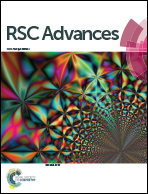The radical cation mediated cleavage of catharanthine leading to the vinblastine type alkaloids: implications for total synthesis and drug design
Abstract
The landmark synthesis of vinblastine (and analogues) by Boger et al. involves a tandem [4 + 2]/[3 + 2] cycloaddition that resulted in the construction of vindoline followed by FeCl3 promoted, radical cation mediated, catharanthine fragmentation/vindoline coupling that yields anhydrovinblastine (after NaBH4 reduction of the iminium ion) or vinblastine directly (by virtue of exposure of the first formed anhydrovinblastine to ferric oxalate-NaBH4, air, 0 °C). It is important to emphasise that this inspired and versatile innovation is essentially a one-pot vinblastine synthesis resulting from exposure of catharanthine/vindoline to a FeCl3/Fe2 (oxalate)3 combination. The mechanistic hypothesis of Kutney, in which the C(16)–C(21) cleavage in catharanthine leading to the azabenzfulvene is triggered by tertiary amine oxidation to the radical cation, has been subjected to a formidable challenge by Boger who has suggested, based on careful experimentation involving a number of judiciously selected simplified analogues, that indole C(2)–C(3) oxidative radical cation generation rather than tertiary amine radical cation formation is the key event that renders fragmentation/coupling possible. This review will attempt to assess the evidence for this novel and intriguing alternative mechanistic proposal and the practical implications of this FeCl3/Fe2 (oxalate)3 combination. A concise history of the azabenzfulvene intermediate will first be presented by way of introduction.


 Please wait while we load your content...
Please wait while we load your content...